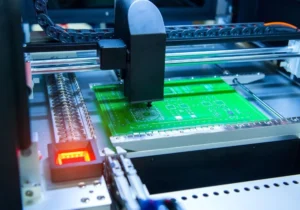In electronic product design, PCB layout and routing is an important process. It will directly affect the performance of the circuit.
There is a lot of software that can achieve PCB wiring placement automatically. However, as the signal frequency increases, engineers have to understand the basic principles and techniques of PCB layout and wiring to make their designs perfect.
The following Question & Answer covers the basic principles and design skills of PCB layout and routing. Total 104 answers will explain the wiring skills in details.
Question 1: What are the issues to be noted when wiring a high frequency signal?
- Impedance matching of signal line;
- Space isolation from other signal lines;
- For digital high-frequency signals, the differential line effect will be better.
Question 2: When placing the board, if the wire is tight, the holes may be more, of course, will affect the electrical performance of the board, how to improve the electrical performance of the board?
For low frequency signals, the through hole does not matter, high frequency signals minimize the through hole. Consider multiple layers if there are more wires.
Question 3: is the more decoupling capacitors added to the board the better?
Decoupling capacitance requires adding the right value at the right place. For example, add it to the power supply port of your analog device and use different capacitance values to filter out stray signals of different frequencies.
Question 4: what is the standard for a good board?
Reasonable layout, adequate power line redundancy, high-frequency impedance impedance, low-frequency wiring simple.
How much difference does the through-hole and blind-hole have in the signal? What are the principles to be applied?
Using blind hole or buried hole is an effective way to increase the density of multilayer board, reduce the number of layers and the size of board surface, and greatly reduce the number of plating through holes.
However, in comparison, the through hole in the process of good realization, low cost, so the general design are used through hole.
Question 5: when it comes to analog-digital hybrid systems, it has been suggested that electric layers be divided, that the ground plane be entirely coated with copper, and that electric layers be divided, with different connections at the end of the power source, but it is far from the return path of the signal. How to choose the appropriate method in the concrete application?
If you have a high frequency > 20 mhz signal line, and the length and number are relatively large, then at least two layers are required for this analog high frequency signal. A layer of signal line, a layer of large area, and the signal line layer needs to be punched enough holes to the ground. The purpose is:
For analog signals, this provides a complete transmission medium and impedance matching;
The ground plane separates analog signals from other digital signals;
The ground circuit is small enough, because you have punched a lot of holes, and the ground is a large plane.
In the circuit board, the signal input plug-in is on the left side of the PCB, and the MCU is on the right side. In the layout, the voltage-stabilizing power supply chip is placed close to the plug-in (the power IC output 5V takes a long path to reach the MCU) , or do you place the power IC to the right of center (the 5V line from the power IC is shorter to the MCU, but the input power line goes through a longer PCB) ? Or is there a better layout?
First of all, is your so-called signal input plug-in an analog device? If it is an analog device, it is recommended that your power supply layout try not to affect the Signal integrity of the analog part:
First of all, your power supply chip is relatively clean, ripple small power supply. The analog part of the power supply, the power requirements are higher;
If the analog part and your MC U are a power supply, it is recommended to separate the analog part from the digital part in the high circuit design
The power supply for the digital part needs to be considered to minimize the impact on the analog part.
Question 6: in the application of high-speed signal chain, there are analog and digital fields in many asics. which is it, to divide or not to divide? What are the rules? Which is better?
so far, no conclusion has been reached. In general, you can refer to the chip’s manual.
Adi’s Manual for all hybrid chips recommends a grounding solution for you, some for common areas and some for isolation. It depends on the chip design.
Question 7: when should I consider the equal length of a line? If an isometric line is to be considered, what is the maximum difference in length between the two signal lines? How to calculate?
Differential line calculation idea: if you transmit a sine wave, your length difference is equal to half of its transmission wavelength, the phase difference is 180 degrees, then the two signals are completely cancelled out.
So the difference in length is a value. By analogy, the signal line difference must be less than this value.
Question 8: what is a serpentine line at high speed for? Are there any disadvantages, such as the requirement that the two sets of signals be orthogonal for differential alignment?
the serpentine line plays a different role depending on the application:
If the serpentine line appears in the computer board, it mainly plays the role of a filter inductance and impedance matching, improving the circuit’s anti-interference ability. The serpentine line in the computer motherboard is mainly used in some clock signals, such as PCI-Clk, AGPCIK, IDE, DIMM, etc.

 EN
EN
 RU
RU




